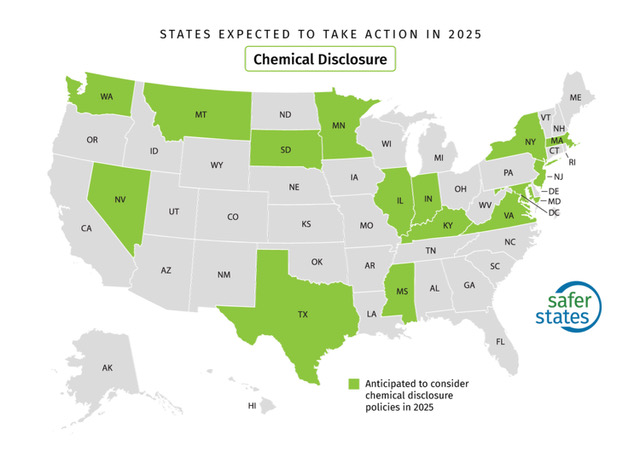Chemical disclosure and restrictions
States have been leading the way in addressing chemical threats from all sources. In 2025, states are building on previous policies that will increase chemical transparency so that consumers, communities, and regulators can know what chemicals are used in products. Additionally, states are working to regulate harmful chemicals in a variety of products.
Health Concerns about Chemicals
Many chemicals haven’t been tested for their effects on health and for those that have, scientists are increasingly alarmed at the damage many of these chemicals can cause. Particularly troubling concerns are:
- That chemical pollution has crossed a planetary boundary, the point at which human changes push the Earth past a stable environment.
- Scientific research has identified over 16,000 chemicals used in plastic and over a quarter of these chemicals can harm human health, including having devastating impacts on children.
- Plasticizers like phthalates and bisphenols have been linked to infertility, cancer, and developmental harm yet are ubiquitous in plastics, building materials, food packaging, and even food.
- Toxic flame retardants are still commonly used in electronics and building insulation despite evidence of neurodevelopmental harm caused by these chemicals and questions about whether they provide true fire safety benefits.
- Industrial solvents and solvents in common household items pollute the air we breathe and the water we drink.
- Firefighters are at the front lines of exposure. Cancer is a leading cause of death among firefighters due to the high number of chemicals they are routinely exposed to.
Expected Chemical Disclosure and Restriction Policy
This year, at least 15 states will likely consider chemical disclosure. These states include Illinois, Indiana, Kentucky, Maryland, Massachusetts, Minnesota, Mississippi, Montana, Nevada, New Jersey, New York, South Dakota, Texas, Virginia, and Washington.
